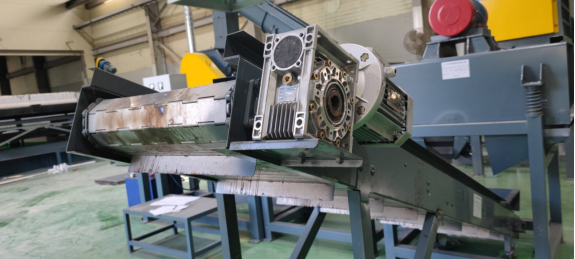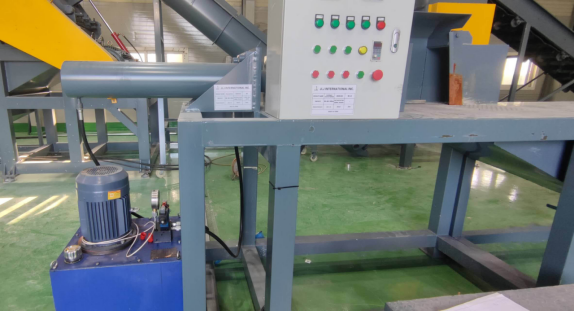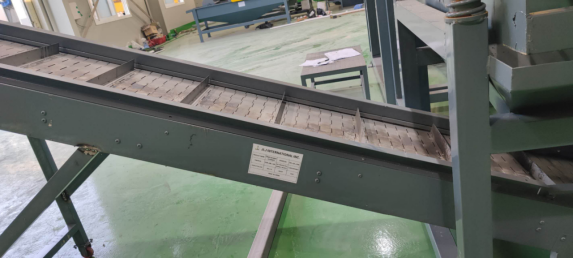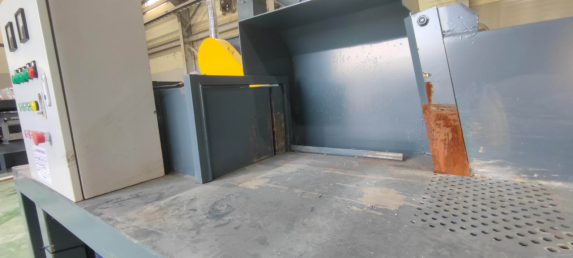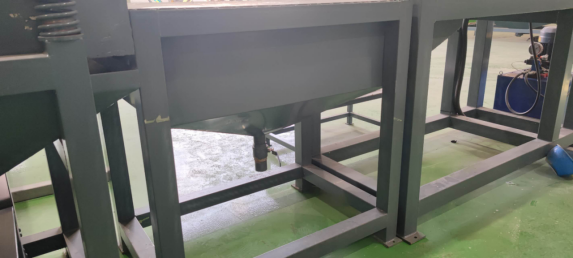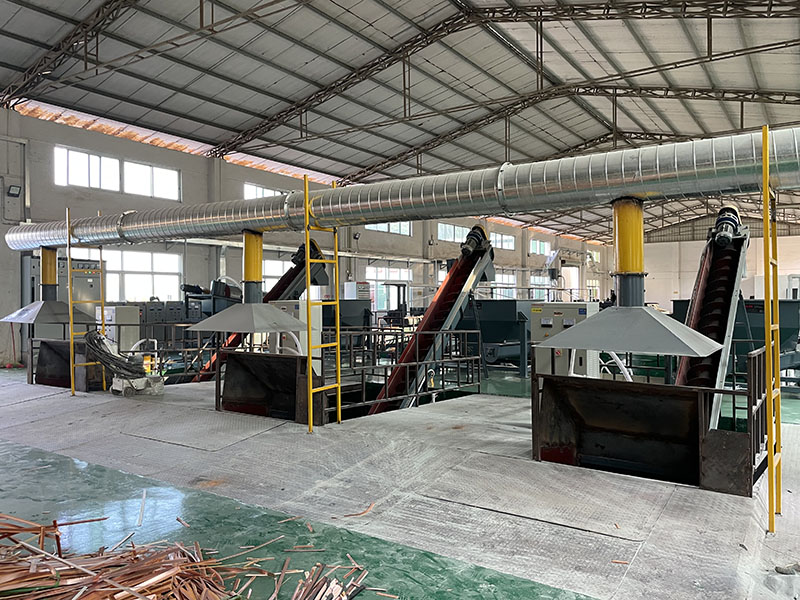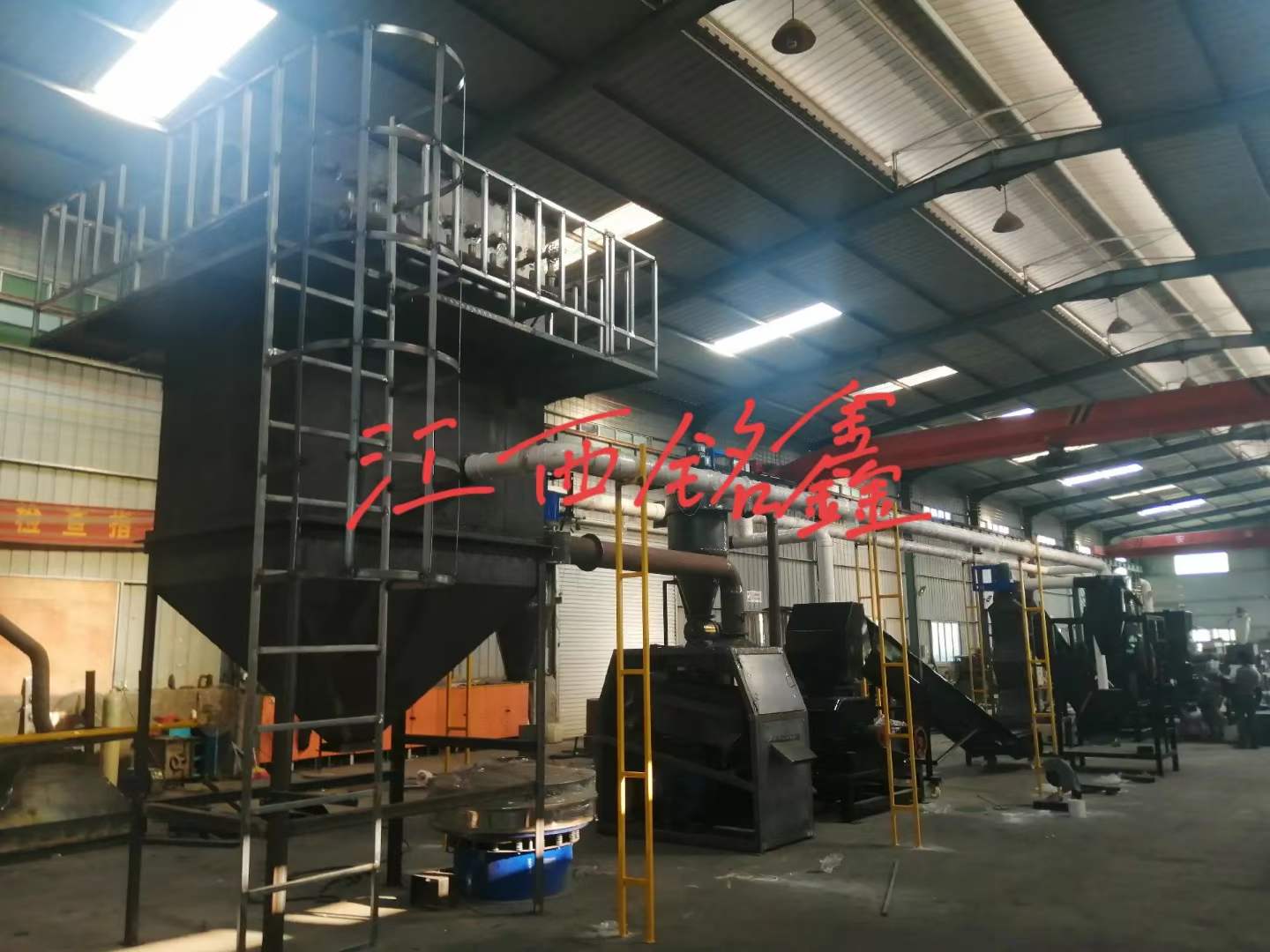Waste lead-acid battery crushing and sorting
Crushing technology and equipmentThe main purpose of the crushing technology of waste lead-acid batteries is to decompose the batteries into separable components, including plastic shell, lead paste, lead grid and so on. At present, the crushing technologies commonly used at home and abroad are mechanical crushing and low temperature pyrolysis.
Mechanical crushing technology usually uses a hammer crusher or a shear crusher to achieve the crushing of batteries through physical impact. According to Chemical Design Newsletter 2018, mechanical crushing technology dominates in industrial production due to its high efficiency and low cost. In addition, the design of crusher is constantly being optimised, such as the fully automatic waste lead-acid two-stage crushing and sorting machine developed by Jiepu Intelligent Environmental Protection Company, which achieves precise crushing of waste lead-acid batteries through a new type of crushing rotary blade and its cutting technology.
Low-temperature pyrolysis technology, on the other hand, heats batteries in an oxygen-free or low-oxygen environment, so that the battery components are decomposed at different temperatures. This method can reduce the emission of toxic gases, but the equipment cost is high, and it has not been applied on a large scale yet.
Sorting technology and equipment
The goal of sorting technology is to separate valuable components, such as lead paste and lead grids, and non-metallic components, such as plastics and rubber, from the crushed material.
Physical sorting techniques, including gravity separation, magnetic separation and flotation, are commonly used in the treatment of used lead-acid batteries. For example, plastic shells, sheet membranes, rubber valves, and lead grids can be separated and recovered by mechanical gravity through specific gravity separators and hydrodynamic separators, while lead sludge settles under the action of flocculants, and separation and recovery is achieved through press filtration.
The fully automatic mechanised and precise sorting technology adopted by JEP Intelligent Environmental Protection Company combines a crushing and sorting machine, an all-oxygen side-blowing reduction smelting converter, a high-strength magnet device and an automated cutting device to realise highly efficient sorting of waste lead-acid batteries.
Process flow and optimisation
The crushing and sorting technology of waste lead-acid batteries mainly relies on a series of professional equipments, which realise the separation and recycling of battery materials through efficient physical and chemical methods. The main crushing and sorting equipment on the market at present includes:
Crusher: as the first step of the sorting process, the crusher is responsible for crushing waste lead-acid batteries into small pieces to facilitate the subsequent sorting steps. The types of crushers include hammer crusher, impact crusher, etc. They can produce high energy impact, effectively crushing the battery shell and pole plate.
Magnetic Separator: Utilising the magnetic difference of materials, magnetic separators can efficiently separate ferrous materials from batteries. Magnetic separators are divided into two types: low field strength and high field strength, which are suitable for the separation of different magnetic minerals.
Eddy Current Sorting Machine: This kind of equipment utilises the eddy current generated by the conductive material in the changing magnetic field, and the magnetic field generated by the induced current interacts with the original magnetic field, generating a thrust force to achieve the separation of non-ferrous metal and non-metal.
Wind Sorting Machine: By adjusting the airflow, the wind sorting machine can separate materials with different densities, usually used for the initial separation of plastics and metals.
Flotation Machine: Based on the difference in physical and chemical properties of the material surface, the flotation machine uses flotation agent to attach the desired mineral particles to the air bubbles to achieve the separation of minerals.
Chemical Processing Equipment: These include high-temperature melting furnaces and pre-desulphurisation-low-temperature melting furnaces for the conversion of lead paste, etc. These equipment convert lead paste into recyclable lead materials through chemical reactions.
According to market research, the production of crushing and sorting machines and their related equipment is gradually developing in the direction of automation and intelligence. For example, the fully automated crushing and sorting system for waste lead-acid batteries developed by Zhuzhou Dingduan Equipment Co., Ltd. can realise the automated crushing and sorting of waste lead-acid batteries, which improves the recycling efficiency and safety.
The crushing and sorting process of waste lead-acid batteries usually includes the following steps:
Pre-processing: firstly, dismantle the waste lead-acid batteries, discharge the acid in them and clean them to reduce the pollution in the subsequent processing.
Crushing: The batteries are crushed using a crusher to break them down into smaller pieces for subsequent sorting steps.
Magnetic Separation: Separate ferrous materials in the battery, such as the battery casing, by means of a magnetic separator.
Eddy current sorting: Separate out the non-ferrous metals in the battery, such as lead pole plate, etc. by using eddy current sorting machine.
Wind sorting: separating plastics and other lightweight materials by wind sorting machines.
Flotation: Separation of lead paste and other materials using flotation machines.
Chemical treatment: The separated lead paste is chemically treated and converted into recyclable lead materials.
Washing and Drying: The recycled material is washed and dried to remove impurities and moisture and improve the quality of the material.
This process not only improves the recycling rate of used lead-acid batteries, but also reduces the impact on the environment by reducing the emission of pollutants. According to industry reports, the recycling rate of lead can reach more than 95 per cent and that of plastics more than 90 per cent with the use of advanced crushing and sorting technology. As technology continues to advance, it is expected that future crushing and sorting processes will be even more efficient and environmentally friendly.












